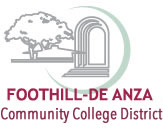Chart of Accounts
The Chart of Accounts (COA) is the "key" to Banner Finance. It defines the accounting distribution used on all transactions processed in the Banner Finance module.
To request a new or to update any of the elements in the chart of accounts, you will be required to follow the procedures described on the Chart of Accounts Maintenance Procedures page.
The Chart of Accounts code is defined by one capital letter "C" that uniquely identifies the Foothill-De Anza chart, and it consists of seven elements that are defined as follows:
F O A P - A L
Fund
This is a six-character numerical code that identifies a self-balancing set of accounts and identifies ownership. Balance sheets and revenue/expense reports can be produced for any fund, which can be restricted or unrestricted. Fund codes may be established in a hierarchy of up to five levels for roll-up and reporting purposes.
Organization
This is a six-character numerical code that identifies a unit of budgetary responsibility or departments within an institution. It is normally used to define "who" spends the money. Organization codes may be established in a hierarchy of up to eight levels for roll-up and reporting purposes.
Account
This is a four-character numerical code that identifies objects, such as the general ledger accounts (assets, liabilities, control, fund balances) and the operating ledger accounts (income, expenditures, transfers). The account is a line item within an institution's financial structure. Account codes may be established in a hierarchy of up to four levels for roll-up and reporting purposes.
Program
This is a six-character numerical code that identifies a function and enables the institution to establish a method of classifying transactions across organizations and accounts. California community colleges follow the Taxonomy of Programs (TOPS) and Administrative and Support Activities (ASA) codes as defined by the California Community Colleges Chancellor's Office. Program codes may be established in a hierarchy of up to five levels for roll-up and reporting purposes.
Activity
This is an optional element and is not in use at this time.
Location
This is an optional element and is not in use at this time.
